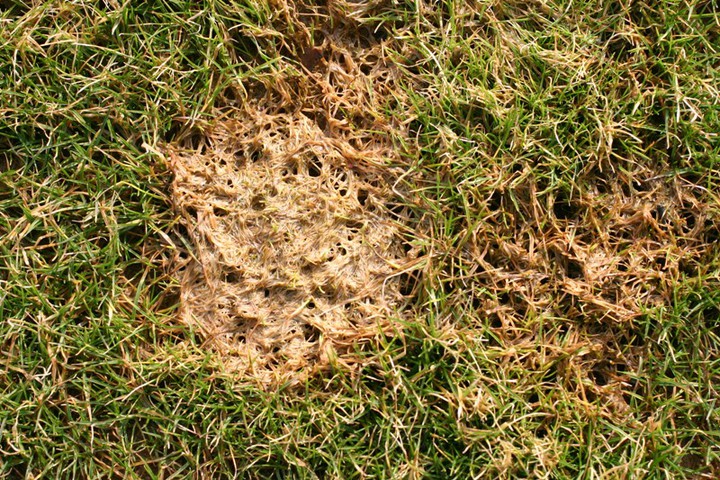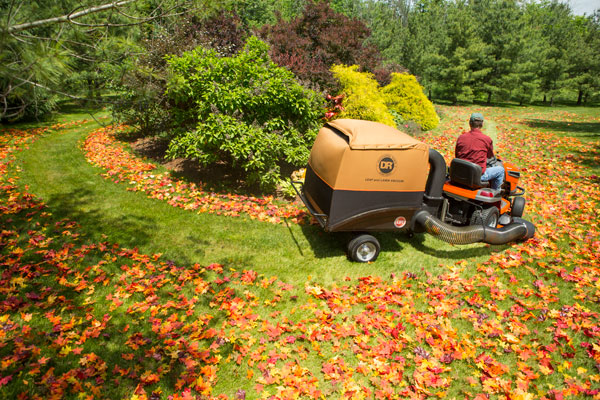
This is snow mold. In many parts of the country, snow mold is quite common to see on lawns come spring. Its prevention and eradication are fairly simple, however.
What is snow mold?
Snow mold is a fungus that affects your lawn. You’ll know you have it if, come spring, you see patches of grey, matted grass on your lawn after the snow melts. It develops over the winter time, usually in climates between 30 and 40 degrees, either in long grass or under wet leaves left over from the previous fall.
How can I prevent it?

There are several things you can do in the fall to prevent snow mold from developing over the winter. Firstly, when you mow your lawn for the last time of the season, mow at a low blade setting, making the grass shorter than usual, about 2″ to 3″. Keeping the grass short in the winter will take away the lush breeding ground that snow mold loves. Secondly, you don’t want to leave wet leaves on your lawn over the winter months. Either rake or vacuum them all off the lawn before the temperature falls to wintery levels. Leaving wet leaves over the winter gives snow mold – and other lawn diseases – the perfect environment to flourish.
How should I get rid of it?
If snow mold develops on your lawn, you’ll know it when the snow melts. You’ll see patches of grey, matted grass that look dry and unhealthy. It may have a pinkish hue to it, and it may be darker around the outside border than in the center.
The easiest and most effective way to get rid of it is to first loosen the area with a rake, being careful not to damage the live grass, just to loosen the dead, diseased parts. Then, run over the affected areas with your lawn vacuum. This will suck out all the dead refuse and leave the area open to the air and sun. The sunlight will dry out any remaining moisture and your lawn will continue to grow normally. Soon you won’t even be able to see the patches that were affected.